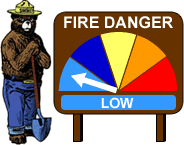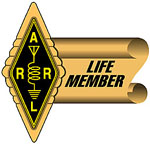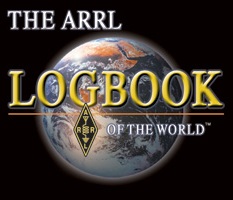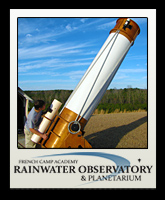AR-Cluster Version 6 Manual
Click Here to Telnet to K3LR DX Cluster
As previously announced, the K8AZ AR-Cluster will discontinue use of AR-Cluster Version 4 and change to use of Version 6 of this software on January 1, 2015.
Why the Change?
1) When the Version 4 software is run under Windows-7 it will sometimes “hang” on a SH/DX Command. The software will not output any responses to received commands for a period of minutes and then will suddenly spew forth responses. If too many unfulfilled commands are queued, the software can lock up altogether. Development of Version 4 ended several years ago so this problem will never be addressed. And of course Microsoft support for Windows-XP has ended.
2) The Version 6 software was designed from the ground up with a much faster Telnet Server. It was tested with simulated loads of several thousand Users. V6 is “multi-threaded” - meaning that it can execute multiple commands simultaneously. By contrast, the V4 software was “single-threaded” - meaning it has to complete the current command before execution of the next command can begin. A complex command from a single user could tie up the Custer.
3) The V4 software‘s Telnet Server was incapable of handling the volume of Spots coming from CW Skimmer Systems. Use of Skimmer Spots is essential if a User wants to run ASSISTED or Multi-Operator in CW Contests. V6 contains an expanded set of Filter Commands to deal with the “Skimmer Firehose”. The User can limit the Skimmer Spots they receive to only those from one Skimmer System if desired.
DESPITE CHANGES YOU‘LL SEE IN THE LOGON SCREEN, OR IN COMMAND SYNTAX, THE SPOTS YOU RECEIVE WILL BE IN THE SAME 80-CHARACTER FORMAT FIRST DEFINED IN THE ORIGINAL AK1A PACKETCLUSTER.
Basic Help Commands
Here are the Basic commands, and an expansion of the ones used most frequently: The syntax & location of some, like SET LATLON (Location) are different.
HELP - Help can be found on the following general topics:
- Announce - Make announcements, display announcements and set options
- DX - Send a DX spot, display DX spots or set DX spot options
- Network - Display information about the cluster network
- Operating - Callsign lookups, QSL info and heading functions
- Station - Set your station info or display others
- Weather - Make WX announcements, display weather and set options
- WWV - Display WWV information and set options
Expanding ANNOUNCE
Help Announce:
- Announce - Send a local announcement
- Announce Full - Send announcement to all
- SHow Announce - Display previous announcements
- SHow Announce Options - Show the announcement options
- SEt Announce Count - Set the default number of displayed announcements
- SEt Announce Default - Set announcement options to default settings
- SEt Announce Filter - Set the announcement filter
- SEt Announce Mode - Set the announcement mode
- SEt Announce Output - Set the type of output: Off, On
- SEt Announce Wrap - Set the announcement wrap option
Expanding OPERATING
Help Operating - Information about operating
- SHow COnteststation - Contest station information
- SHow DAte - Show the node date and time
- SHow HAm - Show US/FCC or VE callbook information
- SHow HAMQth - Callsign lookup on www.hamqth.com
- SHow HEading - Show the heading and distance to a station
- SHow Qslinfo - QSL lookup
- SHow SUn - Show the sunrise and sunset for a location
- SHow TIme - Show the node date and time
- SHow UPtime - Shows the uptime for the node
- SHow VErsion - Shows the AR-Cluster software version
Note SHOW HAMQTH – here is the response to SH HAMQ K8AZ:
sh hamq k8az
Callsign lookup from www.hamqth.com - Callsign: K8AZ
Nick: Thomas
Qth: Chesterland
Country: United States
ITU Zone: 8
CQ Zone: 4
Grid: EN91HM
Address Name: Thomas J Lee
Address City: Chesterland
Address Zip: 44026
Address Country: United States
US State: OH
US County: Geauga
LOTW: Y
QSL: ?
EQSL: ?
Latitude: 41.5391960144043
Longitude: -81.38025665283203
Continent: NA
UTC Offset: 5
Lookups: 2626
Expanding HELP STATION
Help Station - Station information:- SHow Station - Show Station information
- SEt Station EMail - Set your Internet email address
- SEt Station GRid - Set your grid
- SEt Station HEre - Set your here/away status
- SEt Station LAtlon - Set your lat/lon location
- SEt Station MAcro - Set your custom user macros
- SEt Station NAme - Set your name
- SEt Station NEeds - Set your DX needs
- SEt Station PHone - Set your phone number
- SEt Station QTh - Set your QTH
You will be asked to set your NAME, E-MAIL ADDRESS, & STATION LATITUDE & LONGITUDE when you first logon – and you will be “nagged” to do so each time you logon until you comply.
Entering your Latitude and Longitude is necessary to compute SHOW/HEADING AND SHOW/SUN
Hand-Entered Spots
Hand-entered Spots (Spots entered by a person) will look exactly the same:
DX de KC7ZON: 18140.0 WP3GW Centenial 30 pts +KP4 2132Z
Note: To display the LoTW flag (+) and the Country of the Spotted Station, you must use the SET DX EXTENSION LoTW CTY Command. This command is permanent unless you change it. Other items can be displayed.
Skimmer Spots
Skimmer Spots default to NOT SKIMMER when a User first connects. The user can change this with SET DX FILTER commands. If you do not want to see Skimmer Spots, any Filter you specify should begin with NOT SKIMMER.
Skimmer Spots have the same Field Structure as Hand-entered Spots, but the Comments Field is used to convey different information..
DX de K1TTT-#: 7000.7 NP2X CW 35 dB 26 WPM CQ +KP2 2144Z DX de DL9GTB-#: 3580.9 OM7CM BPSK 20 dB 63 BPS CQ OM 2144Z
Skimmer Spots are denoted by the “-#” appended to the callsign of the Skimmer System. As there are now RTTY and PSK Skimmers, the Mode is shown, along with Speed Data and the Relative Signal Strength and whether the station is calling CQ. I believe the RBN does not carry any Spots not of a station calling CQ.
Spot Filters
These are the Fields that can be the basis of Filters. Filter terms can be compounded.
Of particular interest to many of you will be the Filter to limit Spots only to those originated by stations in the US or Canada. That Filter would be:
With Skimmer SpotsSET DX FILTER SPOTTERCTY=K OR SPOTTERCTY=VE
No Skimmer SpotsSET DX FILTER NOT SKIMMER AND SPOTTERCTY=K OR SPOTTERCTY=VE
The expressions can be simplified by using Braces “[ ]” to define multiple commands:
SET DX FILTER SPOTTERCTY=[K,VE]
SET DX FILTER NOT SKIMMER AND SPOTTERCTY=[K,VE]
| Field | Description |
| Call | Callsign of the spotted DX |
| Freq | Frequency of the spotted DX – Example 14195.0 |
| Cty | Country of the spotted DX – follows wpxloc.dat file |
| State | If a US or VE spot, the state or province of the spot |
| County | If a US spot, the county of the spot |
| ArrlSection | If a US spot, the ARRL Section of the spot |
| Comment | Comment in the spotted DX |
| DTS | Date-Time-Stamp |
| Cont | Continent of the DX spot – AS, EU, NA, OC, SA |
| CqZone | CQ zone for the spot |
| ItuZone | ITU zone for the spot |
| Band | Band for the spot – Example 20 |
| Mode | Not recommended to filter by mode since its based of normal operating frequencies which change during contests |
| Spotter | Spotter callsign |
| SpotterNode | Callsign of the spotting node |
| SpotterCty | Country of the spotter – per the wpxloc.dat file |
| SpotterState | Spotter state if US or VE |
| SpotterCont | Spotter Continent– AS, EU, NA, OC, SA |
| Bob | Bottom of the band spots – usually comments |
| CQ | Flag indicating the station is calling CQ |
| Lotw | Station uses the Logbook of the World, LOTW |
| Grid | Grid square of the station |
| Name | Name of the spotted station |
| SpotterCqZone | CQ zone of the spotter |
| SpotterItuZone | ITU zone of the spotter |
| Master | Flag indicating the call is in the Master callsign database |
| InCb | Flag indicating the call is in the US or VE callbook |
| Top100 | Flag indicating the CTY of the spot is in the top 100 country list |
| FOC | Flag indicating the spotted call is a FOC member |
| Skimmer | Flag indicating the spot originated from a skimmer |
| SkimWpm | Skimmer spot - Words per minute, filter by CW speed like: SKimWpm > 35 or SkimWpm < 25 |
| SkimDb | Skimmer spot – DB, filter by signal strength: SkimDb > 10 |
| Unique | Count of the times the call has been spotted, great filter to remove bad skimmer spots |
| SkimCq | Flag indicating there is a CQ in the comment field |
| SkimDupe | Flag that lets the first spot fall thru as a non-dupe and other spots are flaged as dupe, reset every 10 minutes |
| SkimValid | CT1BOH Valid flag: assigned by looking back to see if there are two more spots of the same call, on the same frequency (+/- 0.3 KHz). |
| SkimQsy | CT1BOH QSY flag: assigned because the call was found to have been previously verified but the new spot frequency is +/- 0.4 KHz different from that last reported. |
| SkimBusted | CT1BOH Busted flag: assigned by looking back and determining that there is a similar spot already tagged as V, spotted on the same frequency as the new spot, +/- 0.1 KHz. A “similar” call is one which can be transformed into the new spot by character insertion, deletion or substitution. |
| SkimUnknown | CT1BOH Unknown flag: Any spot that is not given a Valid, Busted or QSY tag is tagged “?” until/unless it qualifies for one of the other tags. |
| SkimCtyCnt | The number of Skimmers currently spotting stations in a given country or (in the case of the USA) ITU zone. This filter is useful in determining which areas do not have adequate Skimmer coverage for effective working of the CT1BOH algorithm. |
Spots Of One‘s Own Call
YOU WILL BE SPOTTED ?? when you call CQ. The CWSkimmer software key‘s on the strings CQ, TEST, and QRZ. Don‘t use lots of “+ & -“ symbols in your Contest CQ Messages. It is to your advantage to be spotted. Spots of your call tell you where you are being heard. In one Contest, K3LR noted that a Skimmer in Darwin, Australia was hearing K3LR at a somewhat unusual time. They brought all their artillery to bear in that direction and knocked off hard multipliers such as 9M, 9V, HS, & YB.
In Contests you might find it useful to end your Filter with the string:
........ OR CALL = {Mycall}
This will cause the Spot of your call to be displayed at the bottom of the screen if you are using CT, CT-Win, Win-Test or DXLog. Sorry – don‘t know about N1MM or WriteLog.
Limiting Skimmer Spots Just to Area Skimmers
There are a number of “local” Skimmers in OH, MI, WI, and WPA. To see Skimmer Spots only from these Skimmers, the filter would be:
SET DX FILTER SPOTTER=[K3LR-#,K8AZ-#,K8ND-#,K9QC-#,KB9AMG-#,KQ8M-#,N8MSA- #,W8WWV-#,W8WTS-#,WE9V-#]
All of these will not necessarily be active, but there‘s no penalty for including all of them.
Compound Filter Examples
Here‘s an example of a Compound Filer many of you will find useful. It includes terms to BLOCK Spots of K and VE. Take out the “VE” term for CQ WW or WPX.
SET DX FILTER SPOTTER=[K3LR-#,K8AZ-#,K8ND-#,K9QC-#,KB9AMG-#,KQ8M-#,N8MSA- #,W8WWV-#,W8WTS-#,WE9V-#] AND CTY <> [K.VE]
The “< >” means NOT EQUAL TO.
Here‘s a Filter useful for the CQ WW Phone Contest where Skimmer Spot are not needed: Here Spots OF the USA are blocked, only Spots originated by US and VE are wanted, and the Frequencies are explicitly stated. Finally the filter ends with CALL=K8AZ to pass Spots of K8AZ.
SET DX FILTER NOT SKIMMER AND CTY<>K AND (SPOTTERCTY=K OR SPOTTERCTY=VE) AND (Freq >= 1800 AND Freq <= 1880 OR Freq >= 3500 AND Freq <= 3600 OR Freq >= 7000 AND Freq <= 7100 OR Freq >= 14000 AND Freq <= 14150 OR Freq >= 21000 AND Freq <= 21150 OR Freq >= 28000 AND Freq <= 28160) OR CALL=K8AZ
There are Macros that can be used in lieu of the express frequencies. For example:
SET DX FILTER {CQWW-SSB}
Is equivalent to:
CTY <> K AND (Freq >= 1800 AND Freq <= 2000 OR Freq >= 3500 AND Freq <= 3600 OR Freq >= 7000 AND Freq <= 7100 OR Freq >= 14000 AND Freq <= 14149 OR Freq >= 21000 AND Freq <= 21160 OR Freq >= 28000 AND Freq <= 28200)
Use the Macros if they match your specs – else use the longer form.
CT1BOH Spot Processing
Finally, you may want to use the CT1BOH Spot Processing.
One problem with Skimmer Spots is “Busted Spots” caused by RF QRM at the Skimmer location, a weak signal, and etc. The CT1BOH Validation Tags can eliminate many of the Spots that different by just one character such as K3LR being corrupted to LW3LPL (which is a valid Argentina Call).
You should review SKIMBUSTED, and SKIMVALID as well as the other CT1BOH Tags. These can be used as Terms in a Filter expression.
Example:
SET DX FILTER (SKIMVALID AND SPOTTER=[K1TTT-#,K3LR-#,K8ND-#,K9QC-#,KB9AMG- #,KQ8M-#,N8MSA-#,W3LPL-#,W8WWV-#,W8WTS-#,WE9V-#,WZ7I-#] AND (CTY<>K AND CTY<>VE) AND (Freq >=1800 And Freq <= 1880 OR Freq >= 3500 And Freq <= 3600 OR Freq >= 7000 And Freq <= 7100 OR Freq >=14000 And Freq <= 14150 OR Freq >= 21000 And Freq <= 21150 OR Freq >= 28000 AND Freq <= 28160)) OR (NOT SKIMMER AND (CTY<>K AND CTY<>VE) AND (SPOTTERCTY=K OR SPOTTERCTY=VE) AND (Freq >= 1800 AND Freq <= 1880 OR Freq >= 3500 AND Freq <= 3600 OR Freq >= 7000 AND Freq <= 7100 OR Freq >= 14000 AND Freq <= 14150 OR Freq >= 21000 AND Freq <= 21150 OR Freq >= 28000 AND Freq <= 28160)) OR CALL=K8AZ
Example:
SET DX FILTER ((Not Skimmer or (Skimmer and SkimCQ and Not SkimDupe and Not SkimBusted )) AND (Cty<>K) AND SPOTTER <> N3CXV-# AND (Freq >= 1800 AND Freq <= 1880 OR Freq >= 3500 AND Freq <= 3600 OR Freq >= 7000 AND Freq <= 7100 OR Freq >= 14000 AND Freq <= 14140 OR Freq >= 21000 AND Freq <= 21130 OR Freq >= 28000 AND Freq <= 28192)) OR CALL = K3LR or CALL=W1AW* OR CALL=W100AW* OR (Spotter=K3LR-# and Cty<>K and not SkimBusted)
Note: The SKIMCQ is not necessary if the Skimmer Spots are coming from the Reverse Beacon Network (RBN) or a Cluster that connects to the RBN. The RBN only propagates Spots of stations calling CQ.


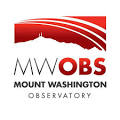
 Mt Washington Wx CAM
Mt Washington Wx CAM
